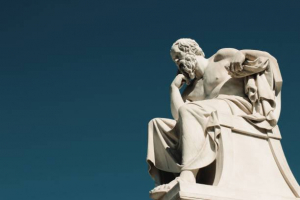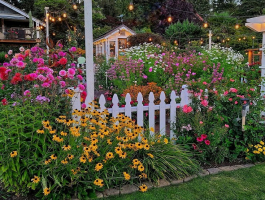Top 7 Best Masterpieces of Islamic Architecture
The globe has received some of the most exquisite architectural works from the Islamic civilization. Islamic architecture is characterized by its intricate ... read more...detailing and ornamentation. Roman, Byzantine, Persian, and Mesopotamian architecture, as well as that of other cultures whose territories the early Muslim conquests in the seventh and eighth centuries captured, all affected early Islamic architecture. Let's discover the best masterpieces of Islam architecture.
-
On the right bank of the Yamuna River in the Indian city of Agra stands the Islamic ivory-white marble mausoleum known as the Taj Mahal. In 1983, the Taj Mahal was named a UNESCO World Heritage Site in recognition of its status as "the gem of Muslim art in India and one of the most beloved works of art in human history". Many people believe it to be the finest example of Mughal architecture and a representation of India's long history. More over 6 million people visit the Taj Mahal each year, and it was chosen as one of the New 7 Wonders of the World (2000-2007) in 2007.
The Taj Mahal builds on the design traditions of older Mughal and Indo-Islamic buildings. Successful Timurid and Mughal structures, such as the Gur-e Amir, Humayun's Tomb, which served as the model for the Charbagh Gardens and the site's hasht-behesht (architectural) plan, Itmad-Ud-Tomb Daulah's (also known as the Baby Taj), and Shah Jahan's own Jama Masjid in Delhi, were specifically cited as sources of inspiration. Earlier Mughal structures were mostly made of red sandstone, but Shah Jahan encouraged the use of white marble that had semi-precious stones inlaid into it. Buildings he supported developed to unprecedented heights of sophistication.
With the probable exception of the Dome of the Rock in Jerusalem, the Taj Mahal is currently the most well-known example of Islamic architecture in existence. For Mumtaz Mahal and Shah Jahan, there are cenotaphs (fake tombs) within; the genuine tombs are in a room below the ground level. Travelers said that Shah Jahan had planned to erect a similar tomb for himself made of black granite on the other bank of the Yamuna as early as the 1660s; however, current academics consider this to be a myth with no basis in reality.
Location: Agra, Uttar Pradesh, India
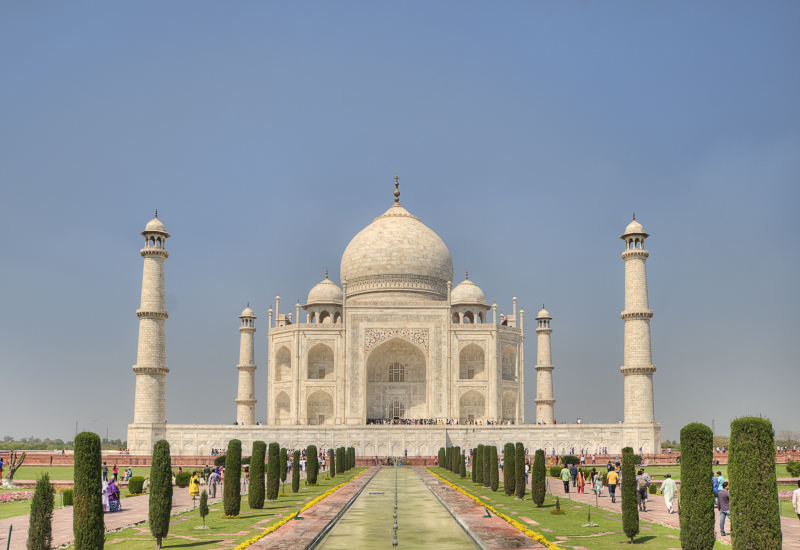
https://www.thoughtco.com/the-taj-mahal-1434536 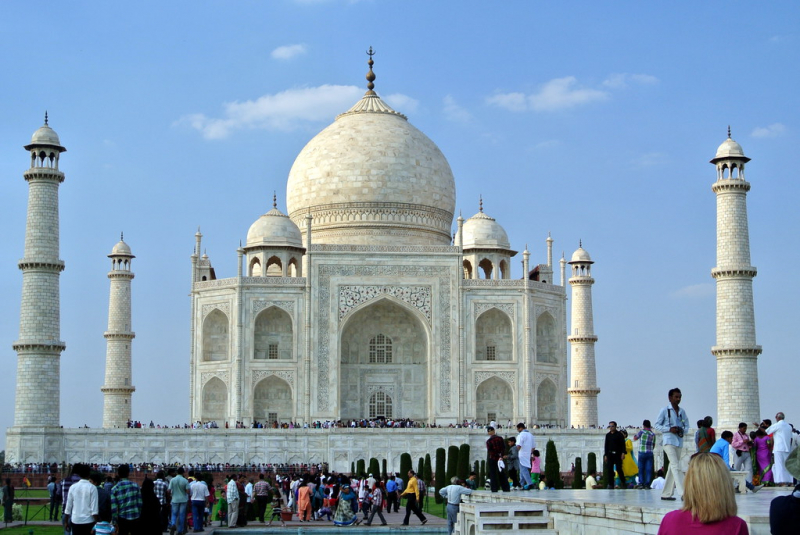
https://www.flickr.com/photos/wooiwoo/8642964101 -
In Granada, Andalusia, Spain, there is a complex of palaces and fortifications known as the Alhambra. In addition to having remarkable instances of Spanish Renaissance architecture, it is one of the most well-known Islamic architectural monuments and one of the historically Islamic world's best-preserved palaces. Since the 19th century, the Alhambra has undergone multiple restorations, making it one of the first Islamic structures to be the focus of contemporary scientific investigation. It is currently a UNESCO World Heritage Site and one of Spain's top tourist destinations. The Alhambra was a distinct city from the rest of Granada below during the Nasrid dynasty. The majority of the facilities found in a Muslim city were there, including a Friday mosque, hammams (public baths), streets, residences, artisanal workshops, a tannery, and an advanced water supply system.
It was a royal city and fortress with at least six significant palaces, the most of which were situated around the northern side where they provided views over the Albaicn neighborhood. The Mexuar, the Comares Palace, the Palace of the Lions, and the Partal Palace are the most well-known and best-preserved structures and are currently the primary draws for tourists. Historical documents and recent digs have revealed information about the other palaces. The Alcazaba fort is at the westernmost point of the Alhambra. Along the Alhambra's walls are are several lesser towers and protected entrances. The Generalife, a former Nasrid country house and summer palace surrounded by ancient orchards and contemporary manicured gardens, is outside the Alhambra walls and situated close by to the east.
Location: Granada, Andalusia, Spain
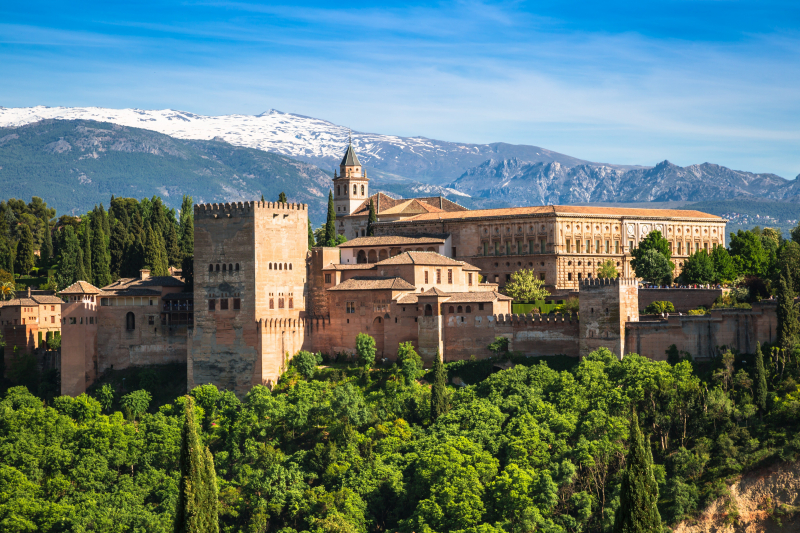
https://www.scmp.com/ 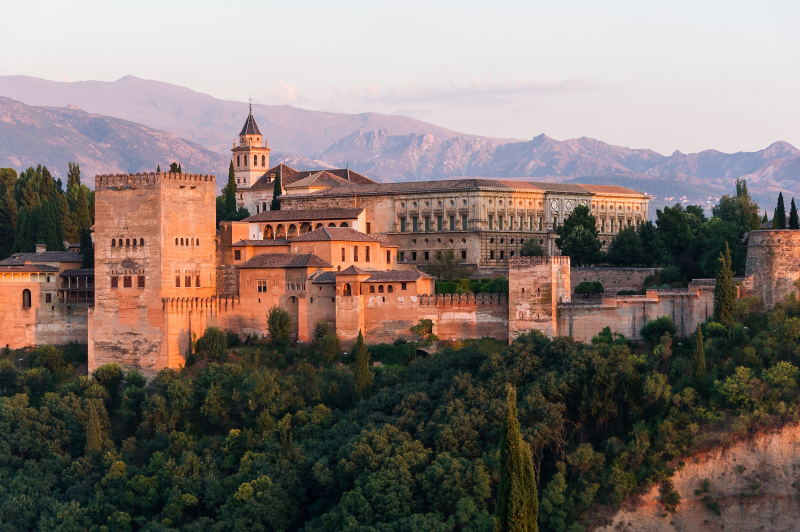
https://commons.wikimedia.org/ -
The Friday Mosque, the pinnacle of Persian Seljukian architecture, blends ornamental elements from several styles with incredibly intricate ornamentation with geometric or floral designs. Isfahan, Iran's Friday Mosque is a revered congregational mosque. From from 771 until the end of the 20th century, the mosque was continuously built, rebuilt, added to, and renovated on the site. Towards the mosque's southwest wing is where you'll find the Grand Bazaar of Isfahan. Since 2012, it has become a UNESCO World Heritage Site. It is one of Iran's biggest and most significant examples of Islamic architecture.
Consider the vastness of the Persian cultural and geographical legacy, which spanned Central Asia, Afghanistan, and the expansion to the edges of the Indian subcontinent, to better understand the significance of the Persian heritage. In architecture, styles that were dominated by the skillful use of a variety of building materials and highly developed construction processes swiftly merged with forms that were established in other regions of the Muslim world. The result was an early creation of a subtle Iranian sense in a very Arab manner.
The adoption of Persian as a literary language was one way that local dynasties emphasized their local identity by the eleventh century, when they had gained control of the region. As a result, several outstanding works of literature, art, and architecture were created, including the magnificent Shahnamah by Firdawsi at the start of the 11th century. The introduction of the cylindrical minaret shape, the four-iwan pattern, and, according to some accounts, the madrasa building designs are only a few of Iran's significant contributions to Muslim architecture.
Location: Malé, Kaafu Atoll, Maldives
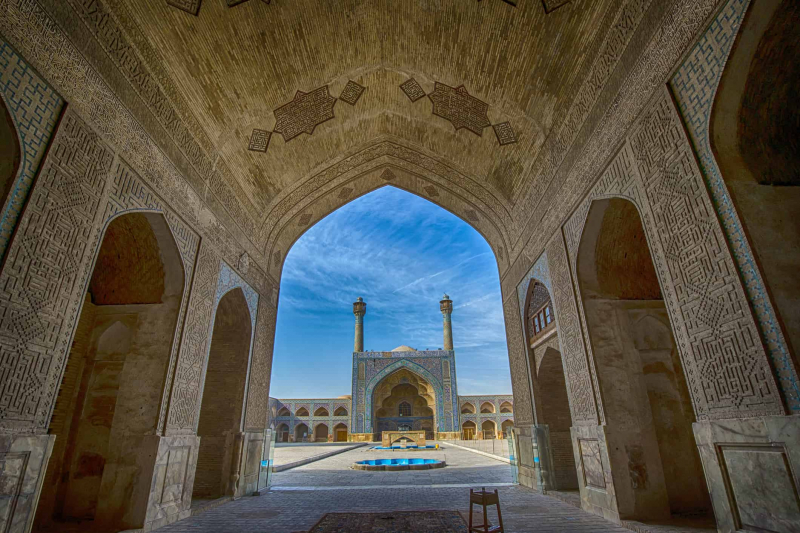
https://www.odysseytraveller.com/articles/elements-of-mosque-architecture/ 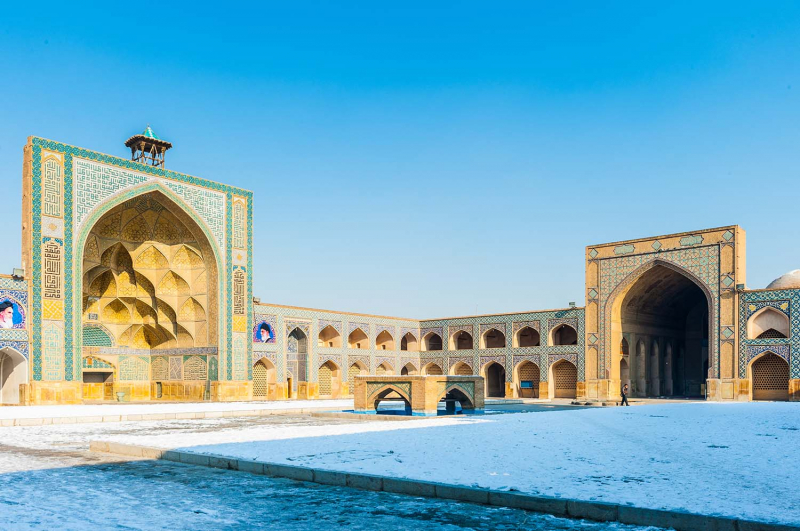
https://vivitravels.com/en/guides/isfahan-what-to-see/ -
The Dome of the Rock is an Islamic shrine that can be seen on the Temple Mount in Jerusalem's Old City. Muslims often refer to this location as the Al-Aqsa Compound or al-Haram al-Sharif. After collapsing in 1015, the old dome was restored in 1022–1023. The Dome of the Rock is the earliest surviving example of Islamic design in existence. Although its outward look was drastically altered during the Ottoman time and again in the contemporary period, most notably with the installation of the gold-plated roof, its architecture and mosaics were modeled after surrounding Byzantine churches and palaces.
In the Abrahamic religions, the foundation stone that the temple was constructed on holds enormous significance as the site where God created the world and the first person, Adam. Jews look toward it during prayer because it is also said to be the location of Abraham's failed effort to sacrifice his son and the area where God's presence is most clearly felt than anywhere else. The Holy of Holies stood immediately atop the Foundation Stone, according to Jewish tradition and the accepted scientific hypothesis. Muslims view this location as having tremendous significance because of legends linking it to the world's creation and the notion that Muhammad's Night Journey started from the rock at the center of the building.
Along with two other neighboring Old City buildings, the Western Wall and the "Resurrection Rotunda" in the Church of the Holy Sepulchre, it has been referred to as "Jerusalem's most identifiable landmark". According to historian Oleg Grabar, the Dome of the Rock continues to be a "unique monument of Islamic civilization in practically all respects", including as a "piece of art and as a cultural and spiritual document".
Location: Temple Mount, Old City of Jerusalem
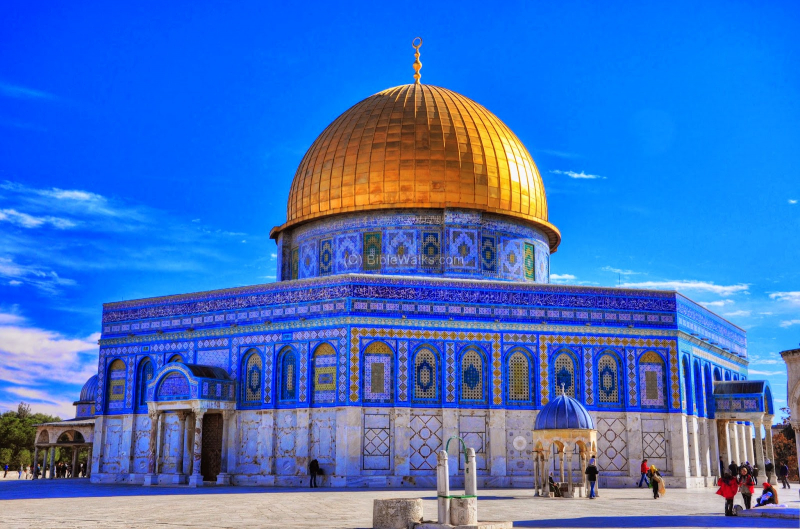
https://israelshield.blogspot.com/2014/06/why-dome-of-rock-must-come-down.html 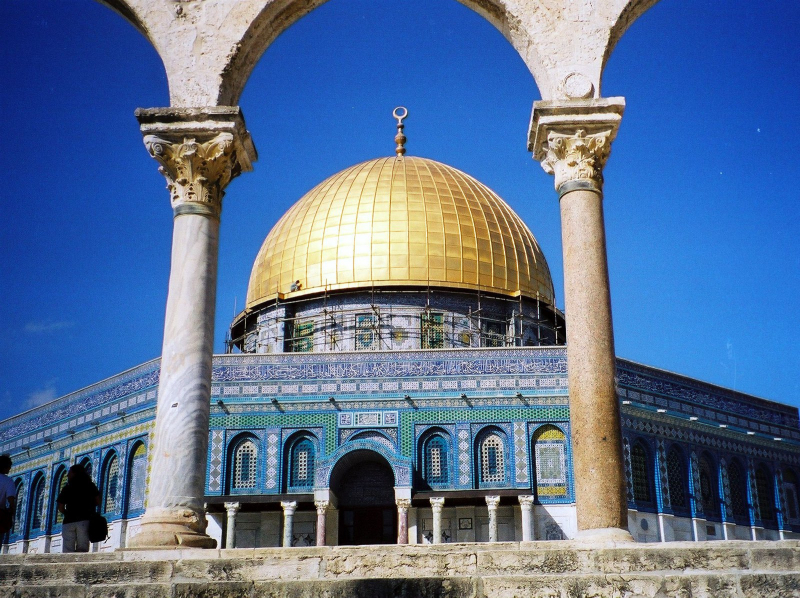
https://www.freeimages.com/photo/dome-of-the-rock-1475230 -
The Great Mosque of Samarra is an Iraqi mosque that dates back to the ninth century CE. It was the biggest mosque in the world when it was first built. It is well-known for its spiral ramp-encircled, 52 meters (171 feet) tall minaret. The Samarra Archaeological City, a 15,058-hectare UNESCO World Heritage Site that was nominated in 2007, contains the mosque. The mosque has 17 aisles and panels of dark blue glass mosaics on its walls. It was a component of Samarra's eastward expansion. The mosque's art and architecture had a significant impact; floral and geometric stucco decorations inside the mosque depict early Islamic ornamentation.
A wall made of baked bricks with forty-four semi-circular towers supporting it surrounds the mosque's main building on all sides. There are 28 windows in the outside wall. Twenty-four of them are facing the qiblah, which is on the southeast side. With the exception of the mihrab location, there is one window for each aisle. There are a total of sixteen doorways that allow entry to the building. The mosque's interior has a sizable courtyard that is enclosed on all sides by covered aisles. A large mihrab framed as an arch could be seen in the prayer room. The courtyard's focal point was a fountain that was surrounded by marble tile and mosaic decorations.
The Great Mosque of Samarra depicted a rectangle courtyard enclosed by these two tiers of walls, as opposed to the square courtyard that was customary for mosques. Historians and architects are aware that the mosque's walls are made of glass or glazed panels. These would be painted in the customary blues, whites, and golds found in several other mosques. Archaeologists examining the mosques have uncovered fragments of these panels. The large mosque at Samarra was built with a combination of baked and sun-dried brick, and wood served as the roof. Marble and gold are utilized in the mihrab. Additionally, research into the Great Mosque of Samarra demonstrated how the world was spared in terms of adornment.
Location: Malwiyah Mosque, Samerra, Iraq
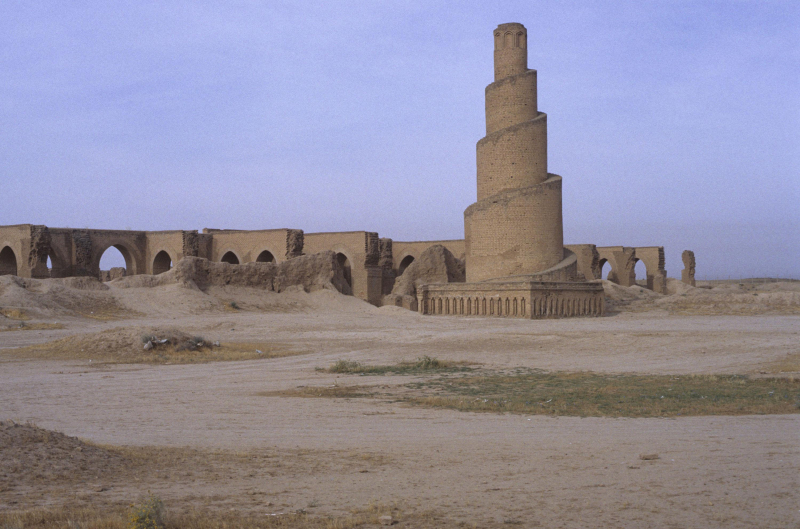
https://www.reddit.com/r/pics/comments/61o4sk/great_mosque_of_samarra_iraq/ 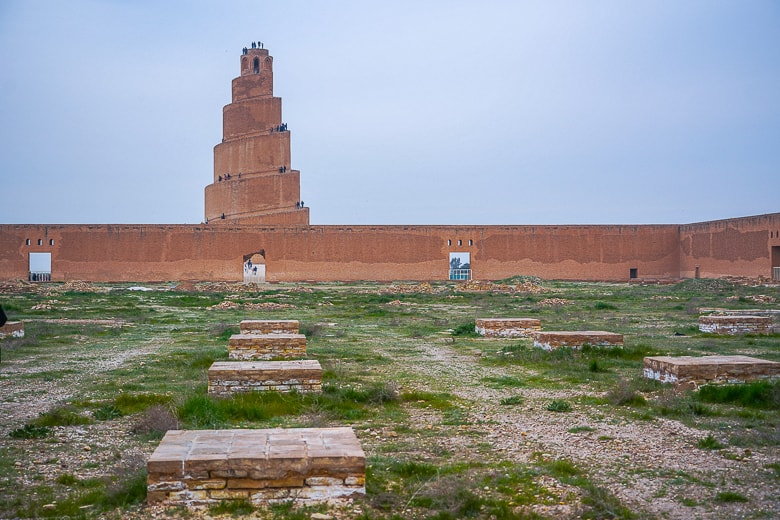
unusualtraveler.com -
In the heart of Aleppo's historic city in northern Syria, the Citadel of Aleppo is a sizable medieval walled palace. It is regarded as one of the world's largest and oldest castles. The Ancient City of Aleppo, which dominates the city, has been a UNESCO World Heritage Site since 1986. The protracted Battle of Aleppo in the 2010s caused serious damage to the Citadel. Early in 2018, it reopened to the public after undergoing repairs on the broken components.
The citadel contains a lot of structural ruins. Sultan Ghazi built a massive stone bridge over the moat that led to an impressive curved entry complex. There were machicolations for dumping boiling liquids on invaders from the mezzanine above the entry ramp, which was six twists up a vaulted ramp to the castle. The structure is filled with hidden tunnels, and the major corridors are adorned with figurative reliefs.
There are homes, supply storage areas, wells, mosques, and defensive structures inside the citadel's walls - everything needed to withstand a protracted siege. The enormous entry block, which was constructed in 1213, is the area of the complex that is the most imposing. Two imposing gates - the Gate of the Serpents and the Gate of the Lions - can be reached through a high stone bridge supported by seven arches that spans the moat, which is now dry. Defenders would have thrown boiling liquids down on attackers and showered down arrows from multiple arrow slits above in order to prevent them from entering the citadel. Invaders would have also had to pass through both gates and travel a meandering route.
Location: Aleppo, Syria
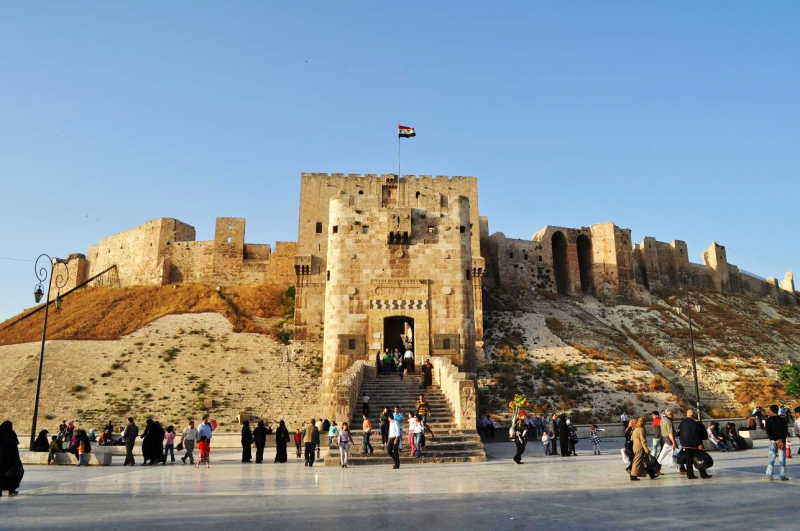
blogspot.com 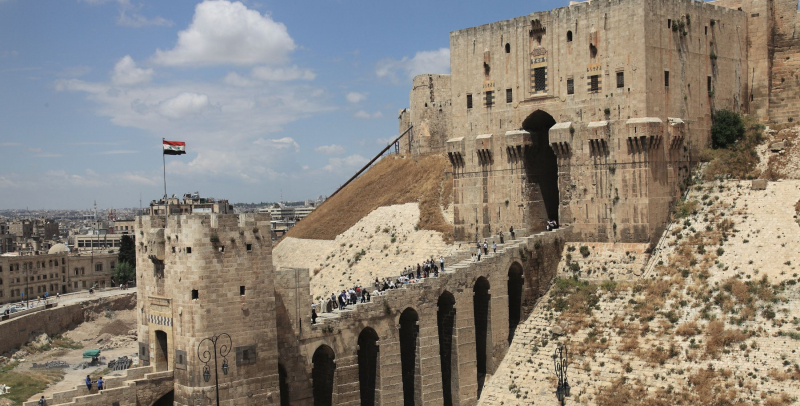
https://www.selcuklumirasi.com/architecture-detail/aleppo-citadel-palace -
One of the first buildings from the period when Muslims governed Al-Andalus (Muslim Iberia, which included most of Spain, Portugal, and a tiny portion of Southern France) in the late 8th century is the Great Mosque of Córdoba, also known locally as Mezquita-Catedral. A two-hour train trip south of Madrid, Córdoba is a popular tourist destination. The structures on this property are as intricate as the incredibly rich history they depict. According to historians, this location formerly housed a temple dedicated to the Roman deity Janus. When the Visigoths invaded Córdoba in 572, they turned the temple into a church.
The heirs of the exiled Umayyads, the first Islamic dynasty that had initially governed from its capital Damascus (in modern-day Syria) from 661 to 750, subsequently transformed the cathedral into a mosque before entirely rebuilding it. Over the course of two centuries, the structure itself was extended. A spacious hypostyle prayer hall, an orange grove, a covered walkway around the courtyard, a minaret that is now enclosed in a square, tapered bell tower, and a courtyard with a fountain in the centre make up this structure. The repetitive geometry of the large prayer hall seems to enlarge it. It is constructed using salvaged Roman columns, from which two tiers of symmetrical arches made of stone and red brick emerge. The mosque is really an amazing building. When you go through its pillar hall you can almost feel the atmosphere from the Moorish time.
Location: Cardenal Herrero street 1, Cordoba
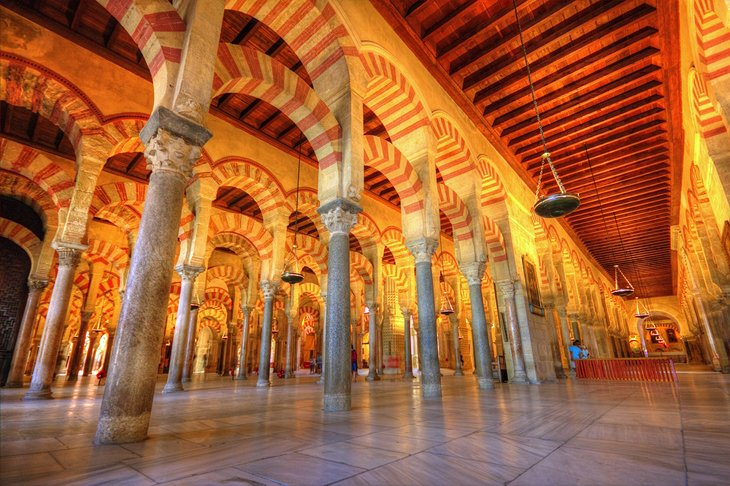
https://www.planetware.com/tourist-attractions/spain-e.htm 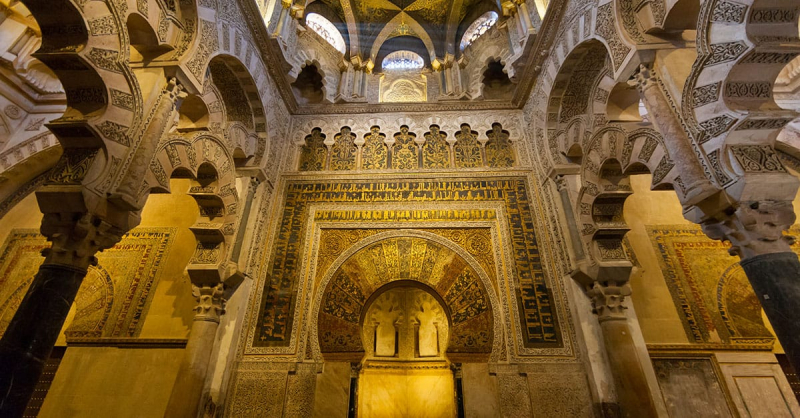
https://www.viator.com/
















